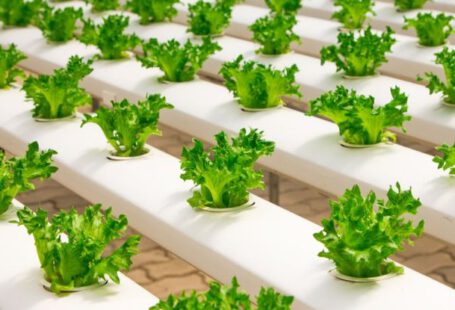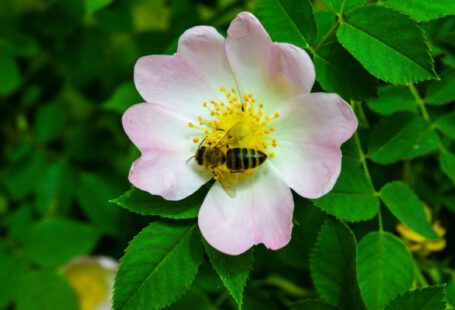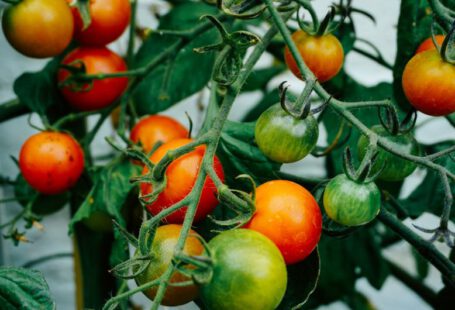Embracing the vibrant world of herb gardening offers a plethora of benefits, from enhancing culinary creations to promoting overall well-being. Cultivating a thriving herb garden can be a rewarding and fulfilling experience, providing an endless supply of fresh herbs for cooking, aromatherapy, and medicinal purposes. To embark on this botanical journey successfully, it is crucial to understand the essential steps and practices that contribute to the growth and maintenance of a flourishing herb garden.
Selecting the Right Location
The foundation of a successful herb garden lies in choosing the optimal location for your plants to thrive. Herbs typically require ample sunlight, so it is advisable to select a spot that receives at least 6-8 hours of sunlight per day. Additionally, ensure that the location offers well-draining soil to prevent waterlogging, which can lead to root rot and other issues. If you are limited on space, consider planting herbs in containers that can be easily moved to capture sunlight throughout the day.
Choosing the Right Herbs
When planning your herb garden, consider the herbs that align with your culinary preferences and personal needs. Popular herbs like basil, rosemary, mint, and thyme are versatile additions that can be used in various dishes and remedies. It is essential to research the specific requirements of each herb, including sunlight, water, and soil preferences, to ensure they thrive in your garden. Experimenting with different herbs can add diversity to your garden and expand your culinary repertoire.
Preparing the Soil
Before planting your herbs, it is vital to prepare the soil to provide a nutrient-rich environment for optimal growth. Start by loosening the soil and removing any weeds or debris that may hinder plant development. Incorporating organic matter such as compost or aged manure can enhance soil fertility and support healthy root growth. Testing the soil pH can also help determine if any amendments are needed to create an ideal growing environment for your herbs.
Planting and Watering
Once the soil is prepared, it is time to plant your herbs according to their specific spacing requirements. Ensure that the plants are positioned at the appropriate depth and gently water them immediately after planting to help them establish roots. Consistent watering is essential for herb growth, but it is crucial not to overwater, as this can lead to waterlogged soil and root rot. Monitor the moisture levels of the soil regularly and adjust your watering schedule based on the individual needs of each herb.
Pruning and Harvesting
Regular pruning is a key practice in maintaining a thriving herb garden, as it promotes bushier growth and prevents plants from becoming leggy or overcrowded. Pruning also encourages the production of essential oils that give herbs their flavor and aroma. When harvesting herbs, it is best to pick them in the morning when their essential oils are most concentrated. Use sharp scissors or shears to snip the stems above a leaf node to encourage new growth and ensure the plant’s continued vitality.
Pest Management and Maintenance
Keeping an eye out for pests and diseases is crucial in preserving the health of your herb garden. Inspect your plants regularly for any signs of infestation, such as yellowing leaves, holes, or webbing. Introducing beneficial insects, like ladybugs or lacewings, can help control pest populations naturally. Additionally, practicing good garden hygiene by removing debris and dead plant material can prevent the spread of diseases and create a clean environment for your herbs to thrive.
Enhancing Your Herb Garden Experience
Beyond the practical aspects of growing and maintaining a herb garden, infuse your gardening experience with creativity and personalization. Consider incorporating companion plants that attract beneficial insects or add visual interest to your garden. Creating a designated space for relaxation, such as a cozy seating area surrounded by fragrant herbs, can transform your garden into a tranquil sanctuary for reflection and rejuvenation. Experiment with different planting arrangements, such as vertical gardens or themed herb collections, to showcase your unique style and passion for gardening.
Savoring the Fruits of Your Labor
As your herb garden flourishes and matures, take the time to appreciate the beauty and bounty it brings to your life. Harvesting fresh herbs for culinary creations, teas, or homemade remedies can deepen your connection to nature and promote a sense of well-being. Share your harvest with friends and family, or preserve herbs through drying or freezing to enjoy their flavors year-round. Celebrate the joys of gardening by savoring the fruits of your labor and relishing the vibrant colors, textures, and fragrances that define a thriving herb garden.
In conclusion, cultivating a thriving herb garden is a gratifying journey that requires dedication, patience, and a deep appreciation for nature’s gifts. By following essential practices such as selecting the right location, choosing the appropriate herbs, and maintaining proper care, you can create a vibrant herb garden that enriches your daily life and nurtures your body and soul. Embrace the art of herb gardening as a fulfilling and rewarding endeavor that connects you to the ancient wisdom and healing power of nature, allowing you to savor the joys of cultivating a flourishing herb garden for years to come.





